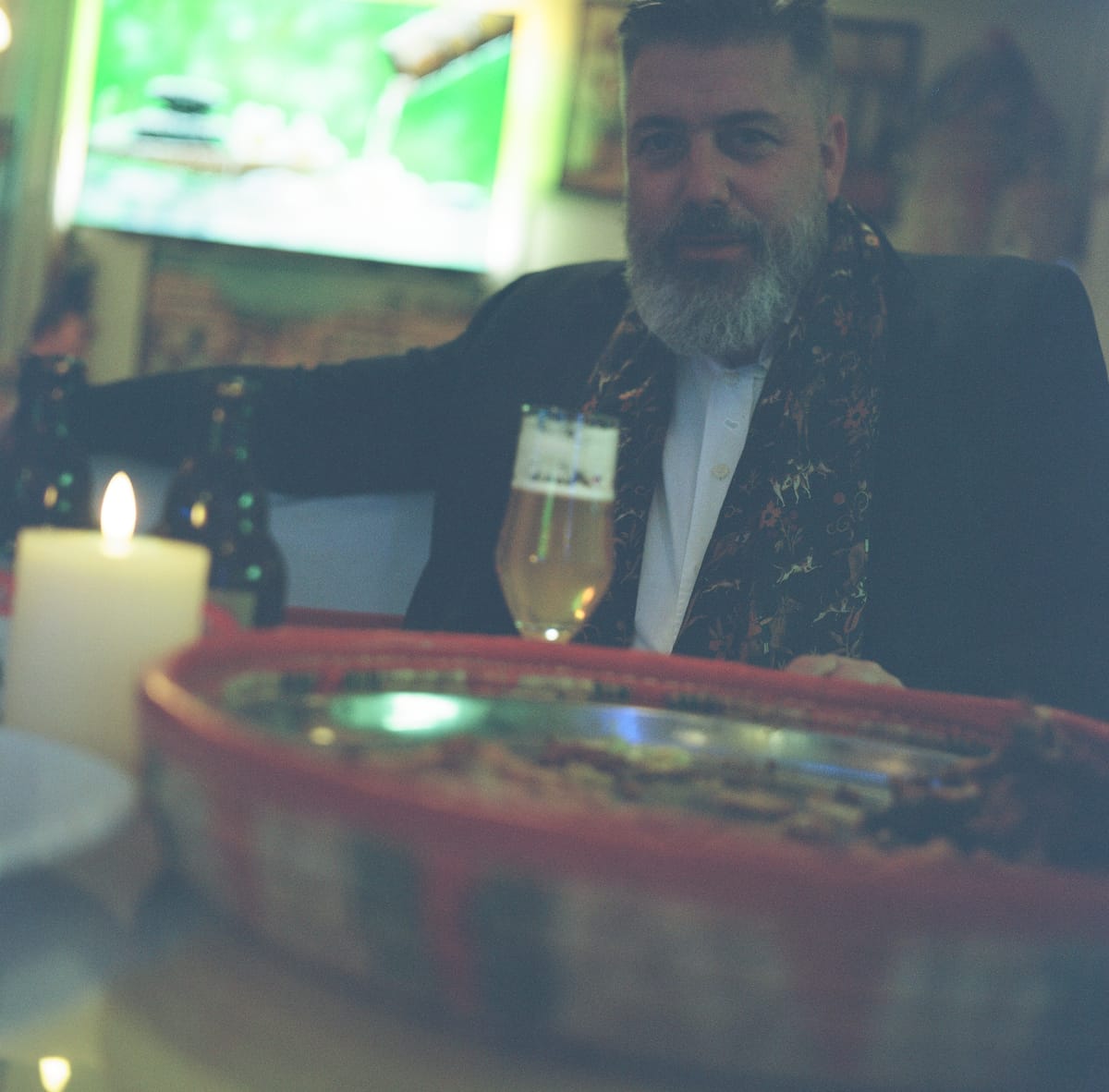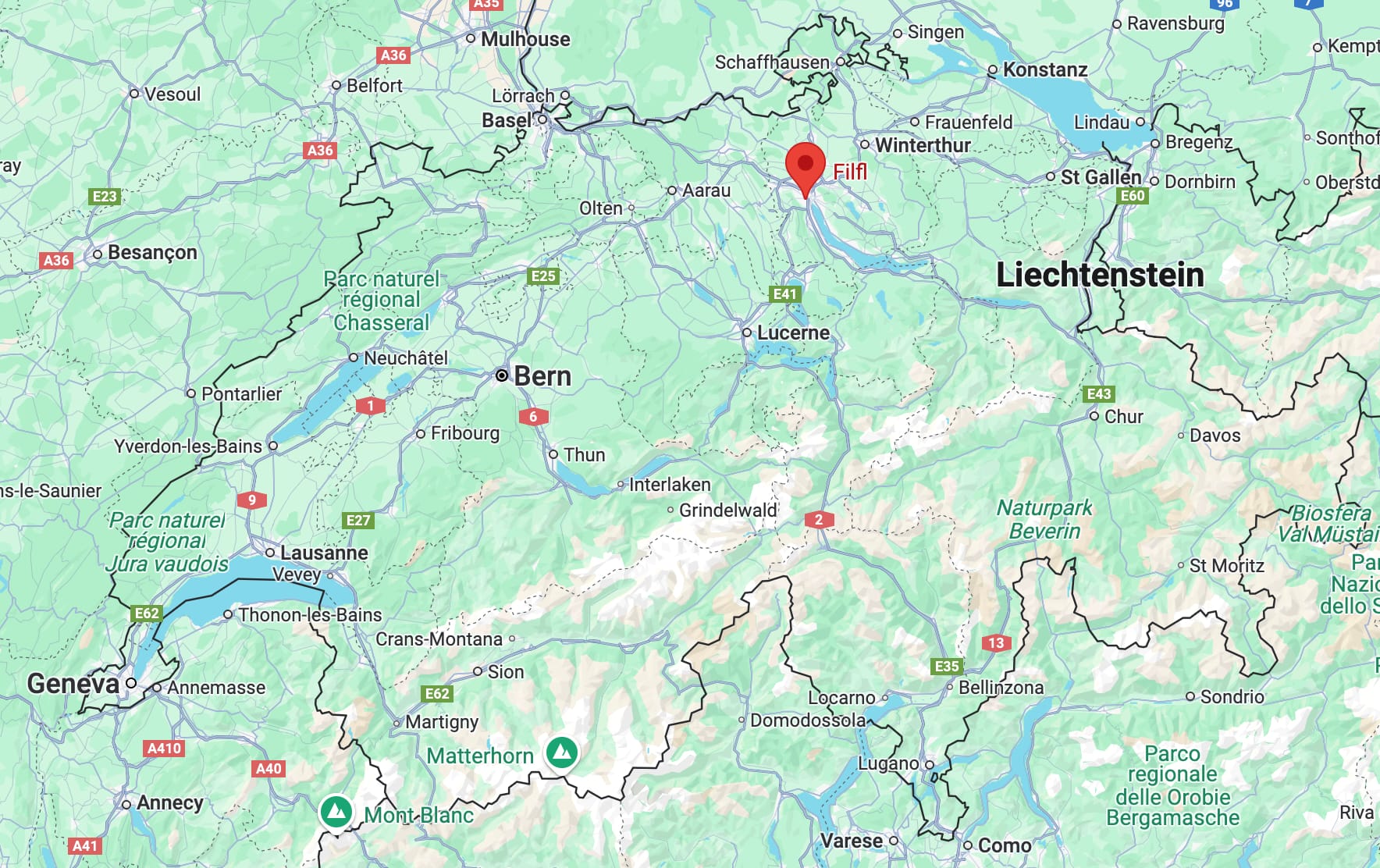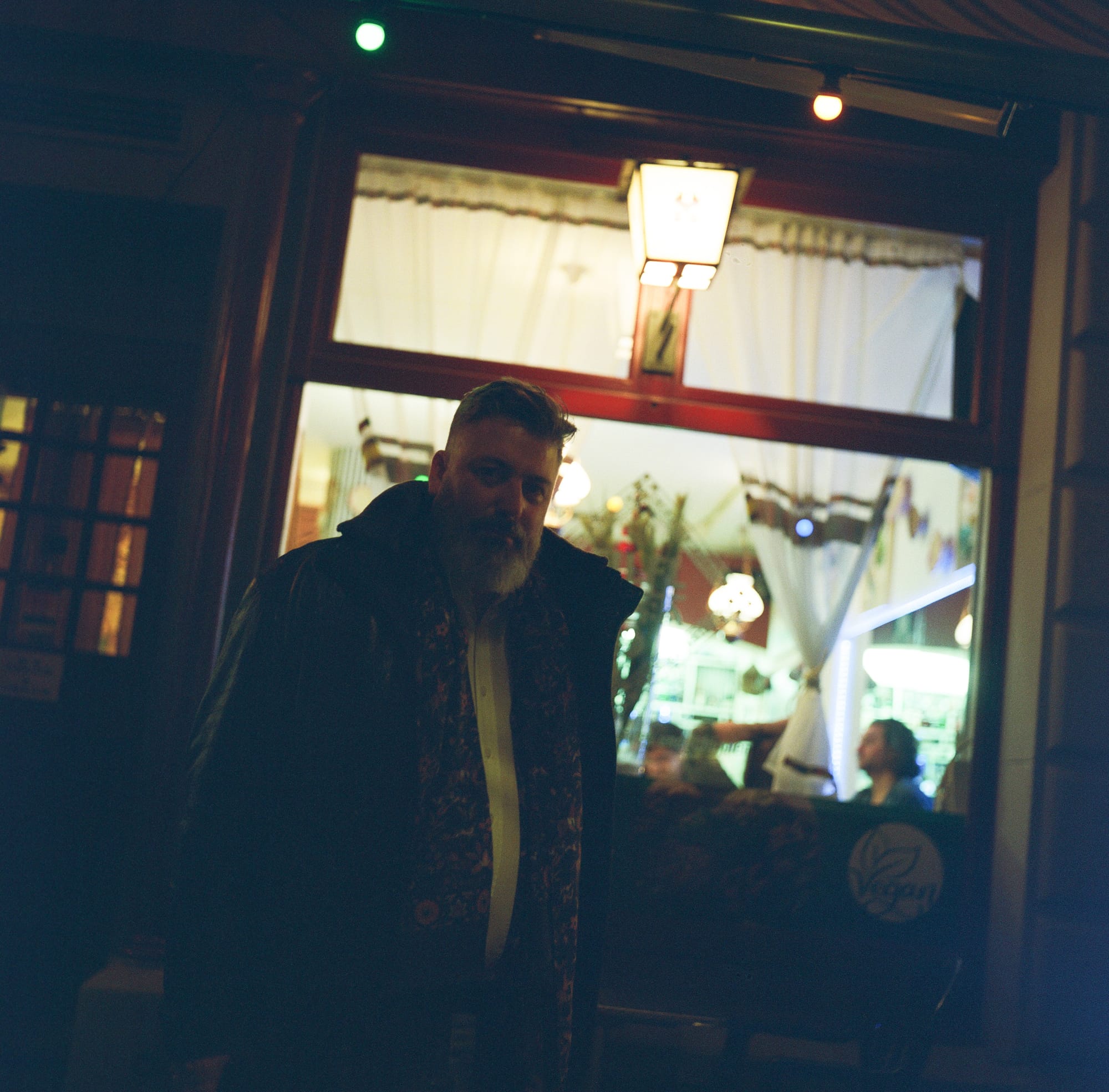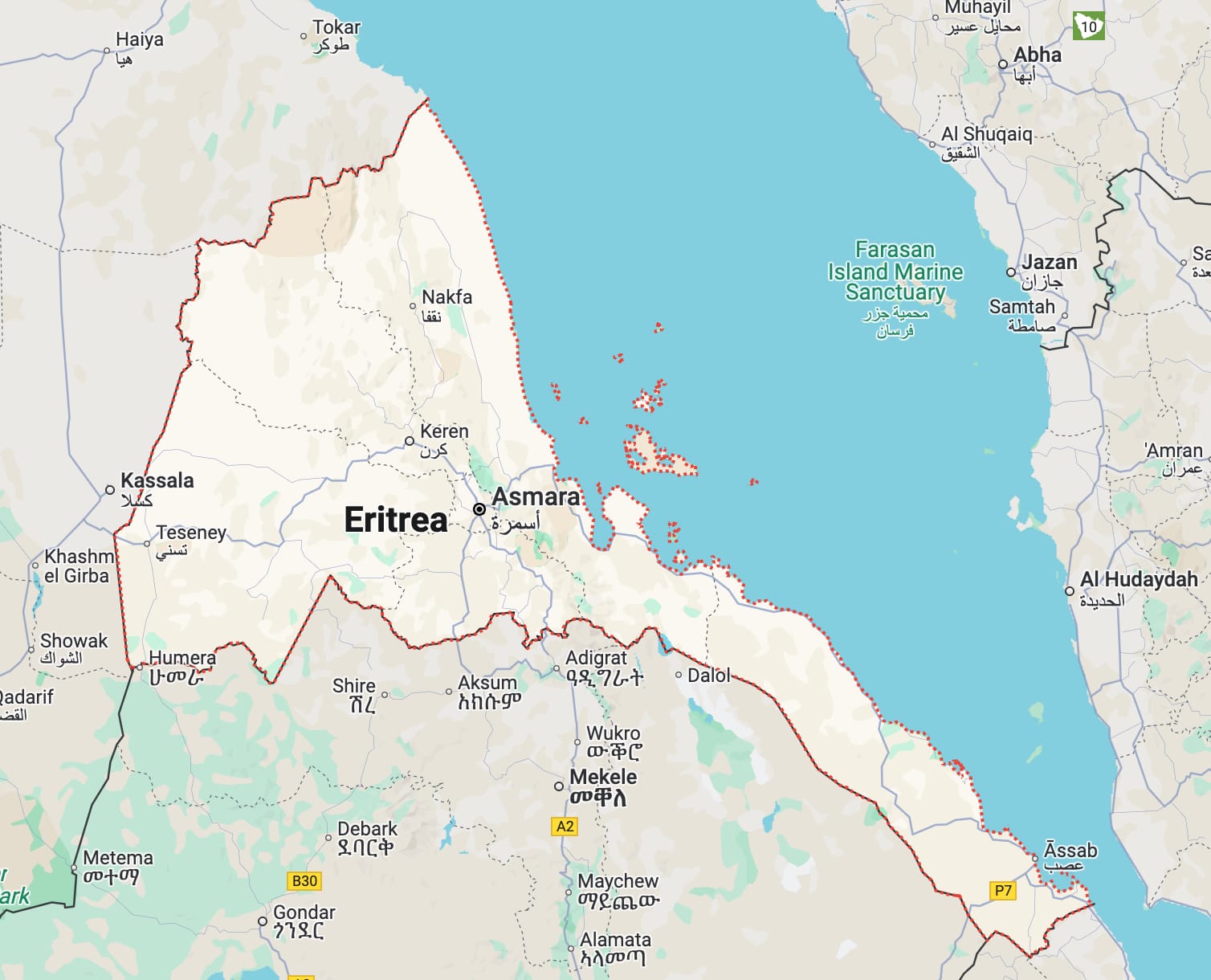Where to eat ERITREA 🇪🇷 Zürich: Filfl Restaurant
At Filfl, the zigni derho (similar to doro wat in Ethiopia) was extra spicy with a rich thickness... the extraordinary spice compounds used in east Africa and Eritrea specifically go a long way towards not just stretching a bit of meat, but really elevating it.

Filfl Restaurant
Zentralstrasse 136, Zürich

Published May 27, 2025 · by Amanda Rivkin Häsler
What we ordered: One meat Filfl plate for two people. It came with zigni derho (chicken in hot chili with tomato sauce, onions, niter kibbeh or spiced butter and boiled egg, with mitmita or berbere spice mixes), gored gored (diced beef in chili sauce with niter kibbeh or spiced butter), kulwa berai (sautéed beef with onions, peppers, tomatoes, peppers and niter kibbeh or spiced butter, refined with mitmita or berbere spice mixtures), yellow lentils, spinach and shiro (ground chickpeas with onions, tomatoes and refined with various spices) served over a bed of spongy flatbread known as injera with more served on the side to scoop up the different dishes. To drink, we had three Eritrean Asmara beers.
Cost: 80.40 CHF / €85 / $97
Eritrean food is a new experience, though one unsurprisingly similar to Ethiopian, a country that it has fought a bitter war that has left both countries devastated. But before the devastation of the war, there was the devastation of a regime one could liken to Daniel Ortega—and the left leaning Swiss supporters of it who are responsible for encouraging much Eritrean immigration to Switzerland. Then there are also those who are opposed, resulting in some of the most bitter feuds that have been known to occasionally erupt in the streets of Switzerland whenever there is a disturbance back home. Who knew? Not most people.
For most, Eritrea is a country not often contemplated and while remote, it offers access to Red Sea ports but exists in a hostile area beside not just arch-enemy Ethiopia but Sudan, Djibouti, Saudi Arabia and Yemen. As an American, I think the only time Eritrea has cropped up in the news is in relation to this critical geostrategic positioning during the two decade-long war on terror.
Most east African restaurants in America focus on Ethiopian food and the Washington area especially is home to a large Ethiopian community. I also went to college with someone calling herself the niece of the archbishop of Eritrea, but she very much grew up in America. Besides her beauty, she did not disclose much about her ancestral home.

The basis of both Eritrean and Ethiopian food is the spongy injera bread that is used to scoop up the various dishes on offer on top. This is not where the similarities end. The dishes forming the foundation of a meal in Eritrea consist of the basic components of light vegetables, meat, spices and lentils. Berbere, the spice mixture, is a key addition to the meats as is niter kibbeh, a clarified butter that is impossible to find in Switzerland but is very popular in regional foods across the Red Sea in Saudi Arabia and Yemen as well.
At Filfl, the zigni derho (similar to doro wat in Ethiopia) was extra spicy with a rich thickness and sand-like texture from the spices being absorbed by the clarified butter. The chicken was bone-in, and while it could be difficult to pull it off with injera in hand, once it came off, it was well worth that little bit of struggle. Complimented by the far easier to eat gored gored and kulwa berai, it was clear that a little bit of the extraordinary spice compounds used in east Africa and Eritrea specifically go a long way towards not just stretching a bit of meat, but really elevating it.
The lentils were mild as was the spinach, but it cut the meat and made it all much more digestible. Injera has the ability to expand and expand in the stomach, making one disproportionately full in no time. This is not unimportant in a country where the wealth is not in great measure as in Switzerland, but rather where survival is paramount in difficult circumstances often bordering or tipping into hardship. While we were nearly members of the clean plate club at Filfl, we didn’t feel overly stuffed even if some weight went on in the course of the meal.

As for décor, things were tasteful, with maps and colorful gibabo, the straw circular shaped with sombrero-like tops that form the ceremonial dish a plate of injera covered in smaller dishes or one big one might be served in. There were tributes to home, and yes, even a long moment when Eritrean President Isaias Afwerki was on screen before the video was switched to more playful content.
The other patrons were decidedly Swiss the night we visited, with one multigenerational family sharing a meal nearby. As was the case when we visited the Ethiopian restaurant Injera in Bern, a communal plate can bring out one’s community of parents and kids and grandparents. It can also bring out, in Switzerland, parents who think their kids, not the food should have a run of the place. This is all the stranger in an immigrant establishment where this one Swiss family encouraged their kid to pull on the curtains of the entry while shouting loudly. One wonders how they would react if Eritrean children did this in their living room. Likely not well.
Overall, Filfl gets strong marks for the affordability of great food. The light Italian-style Asmara beer chased it down nicely and the people were friendly. We also tried to order the Eritrean tartare kitfo, which was not available but we were told to order in advance if we planned to have that dish to ensure its freshness – a certain mark of quality and care for certain.
Another bonus is they advertise that they are open 365 days a year. Nothing in Switzerland is open 365 days a year. While we have not run spot checks on days when literally everything in Switzerland is closed, this work ethic is rare and unusual in a country where vacations are frequent and borderline sacred. This suggests some extremely hard-working immigrant ethos goes into making supremely nice, fresh food.

How to get to Eritrea from Switzerland:
By car, it would take approximately 83 hours without stopping for conflicts on a highly perilous route through Italy, Slovenia, Croatia, Serbia, Bulgaria, Turkey, Syria, Jordan, Egypt and Sudan before entering Eritrea. All in all, it is surely bound to take longer than 83 hours, a timeline that certainly only factors in ideal road conditions not human conditions. Certainly, the visa process for Eritrea, a highly isolated authoritarian state, alone would take longer before you even get to all the other potential visa requirements and conflict zones with their myriad checkpoints that one would cross on such an odyssey.
By rail, there is no possibility to even tempt fate.
By air, Turkish Airlines and Emirates with a code share on flydubai, transiting through Istanbul or Dubai are really the only possibilities from Geneva or Zürich. The shortest possible flight time with layovers factored in is just under 10 hours.
How many Eritreans are in Switzerland: More than 36,000
Distance between Bern and Asmara: 7,051 km
Distance from Filfl Restaurant to Asmara: 6,934 km
Learn how to make Eritrea's national dish, zigni derho with injera, and about its origins.
Follow our social media pages @swissglobaldining on Instagram, TikTok and YouTube